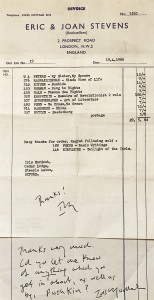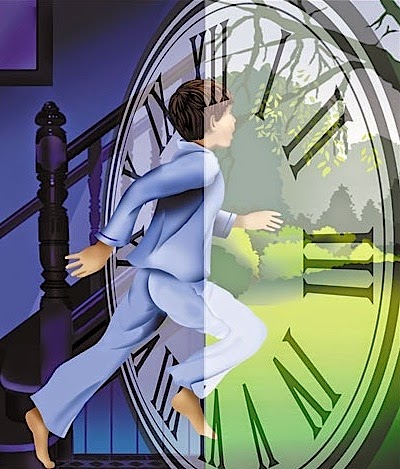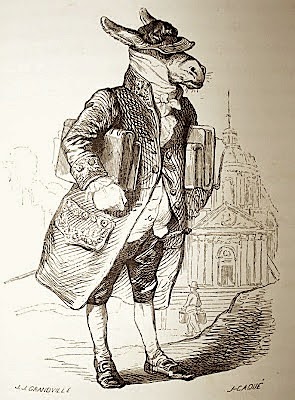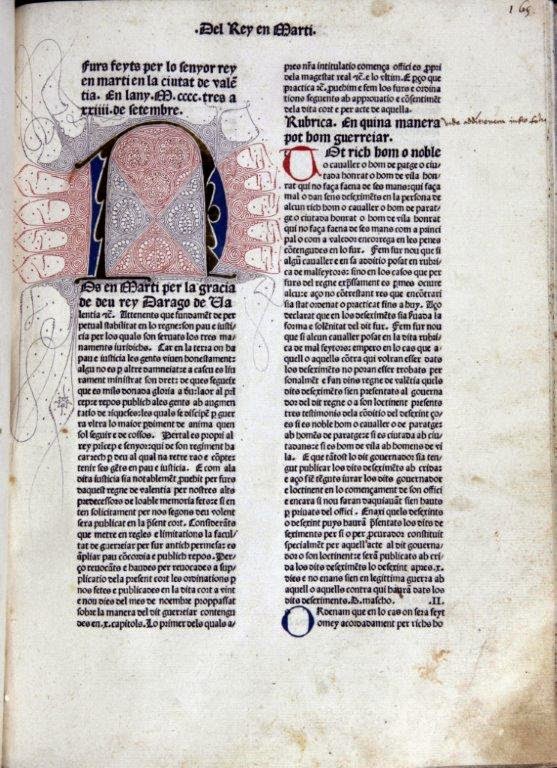
George Eliot, The Legend of Jubal and other poems (Blackwood 1874). First Edition. Spine faded and some foxing on the endpapers, otherwise a very good copy. Bookplate. £8.50.
J. W. Cross (ed), George Eliot’s Life as related in her Letters and Journals. Arranged and Edited by her Husband J.W.Cross. In three vols. Blackwood 1885. Original cloth marked and worn, and the hinges strained. An uncommon book, and one that is much in demand. £10 No copy found online
Too right ! The condition of this copy attests to its value as a source of information on Eliot’s life. The novelist is worshipped by her legion of fans to the extent that the longstanding George Eliot Society is one of the best supported members of the Alliance of Literary Societies, of which your blogger is a committee member. She may not be as trendy as Jane Austen nowadays, but as a female novelist and intellectual she is internationally esteemed.
F. Scott Fitzgerald, The Great Gatsby, Chatto 1926. The scarce first English edition. Spine slightly faded and worn. Name on the endpaper. £15.00 . A copy rebound in modern leather is currently priced online at £3,300
This year is the centenary of one of the greatest American novels. Actual firsts can change hands for six figures and although the item for sale is only a first English edition, without it appears, a jacket, its value has jumped from £15 to over £1,000 for one copy online in poor condition since this Sims catalogue appeared.
Ian Fleming, Diamonds are Forever, Cape 1956. First edition. Presentation copy to his friend Leonard Russell : ‘ To Leonard on whose back I ride. With affection from Ian’.
Fine copy in d.w. £30.00 £3,000 – £10,000
An early, sought after Bond title. Russell was a journalist and a champion of Fleming’s work.
Ian Fleming, For Your Eyes Only, Cape 1960. First edition. Presentation copy to his friend Leonard Russell, the literary editor of the Sunday Times. Inscribed: ‘ To Leonard whom I miss from Ian’. Fine copy in d.w. £30.00 £3000+
Lucky Leonard to have two Flemings presented to him by the author.
Ludovico Maria Sinistrari Frier Minor, Demoniality. Translated into English from the Latin ( with introduction and notes by the Rev. Montague Summers. Fortune Press N.D. This is the special issue of 90 copies on Arnold unbleached had-made paper, numbered and signed by Summers, bound in full vellum, gilt with yapp edges. Rare. In perfect state. £20.00 £800 unsigned.
Continue reading
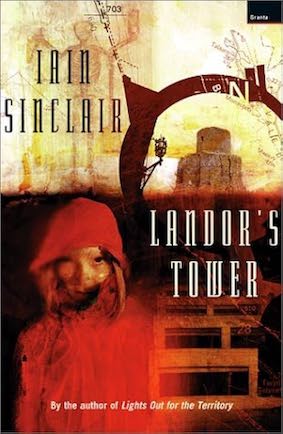
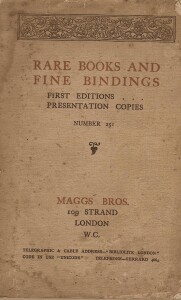

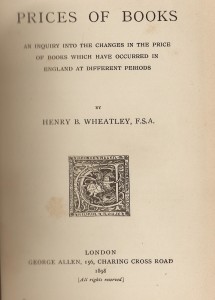 H.B.Wheatley’s Prices of Books (1898) is a real eye opener, not just for the prices realised by truly great and important books, but also for those works which today would not fetch ( in real terms) anything like the sums that our Victorian forebears might have paid.
H.B.Wheatley’s Prices of Books (1898) is a real eye opener, not just for the prices realised by truly great and important books, but also for those works which today would not fetch ( in real terms) anything like the sums that our Victorian forebears might have paid.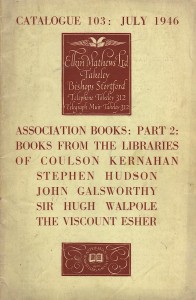 near Bishops Stortford, probably contained descriptions of books and manuscripts by one of the directors, Ian Fleming, an avid book collector. It’s tempting to imagine the future creator of James Bond trawling through some of the items in the catalogue in search of likely material.
near Bishops Stortford, probably contained descriptions of books and manuscripts by one of the directors, Ian Fleming, an avid book collector. It’s tempting to imagine the future creator of James Bond trawling through some of the items in the catalogue in search of likely material. was issued by the well-established book dealer Elkin Mathews Ltd in July 1946, just a year or so after the close of the Second World War.
was issued by the well-established book dealer Elkin Mathews Ltd in July 1946, just a year or so after the close of the Second World War. Before we report on the bargains available in May 1908 at Edward Baker’s Great Bookshop in John Bright Street, Birmingham (contrast it with Birmingham City Centre today, where there is not a single second hand bookshop ), let us examine what Mr Baker was prepared to give for top-end first editions in 1907 as advertised in The Bookman for May of that year.
Before we report on the bargains available in May 1908 at Edward Baker’s Great Bookshop in John Bright Street, Birmingham (contrast it with Birmingham City Centre today, where there is not a single second hand bookshop ), let us examine what Mr Baker was prepared to give for top-end first editions in 1907 as advertised in The Bookman for May of that year.